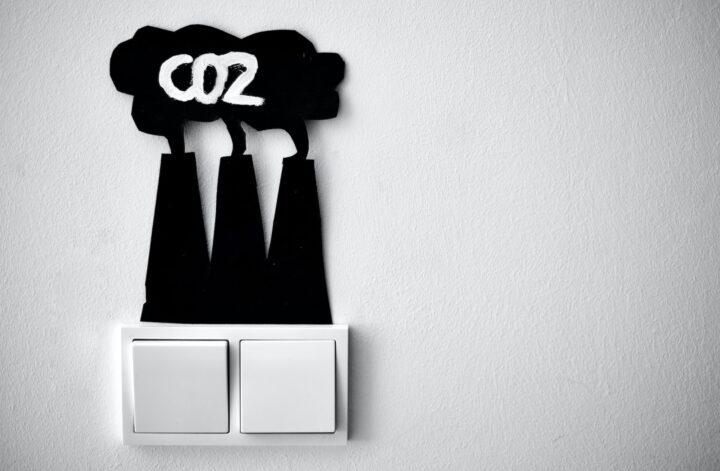Your business is contributing its own levels of carbon emissions into the atmosphere on a daily basis. As a business, you’ve got the eye of Sauron on you more intensely than the average person when it comes to reducing your carbon impact on the world.
With climate change being a very real thing that’s only getting worse with time, it’s important to do what you can to keep those carbon emissions low.
There are plenty of f ways that you can actively keep your carbon emissions low as a business. If the financial implications of your high carbon emissions are causing damage to your business performance, then there’s no better time to make the change than now.
Here are all of the top tips you’ll need to keep your carbon emissions low as a business in 2023.
Measure your current carbon footprint as a business
Firstly, have you measured your current carbon footprint as a business? Sure you get your monthly bills through the mail but have you taken a look at how much that costs equates to when it comes to carbon usage? It’s important to take a look at this closely because chances are, you’ll be shocked at just how much is being used.
Whether you operate a warehouse business or a standard office work environment, every company is different. It’s a good idea to sit down with your finance and building operations team to look at the current carbon footprint.
What could be improved to help lower the usage? You’ve likely got a lot that can be done, so it’s worth investing the time into measuring and monitoring it first.
Improve your appliances and equipment
Appliances and equipment within the business premises all contribute to the carbon emissions within your business. When it comes to your appliances, there may be appliances that have been running for years now and while they may have been efficient when brand new, they’re now taking up double the energy to run efficiently.
While you want to get value for money in both your appliances and equipment, that value might soon deteriorate when it’s costing you more to run it than simply buying a new version.
Think about taking a closer look at what usage your appliance or equipment is having within the workplace and how you could improve upon this. There are tools that you can use, that can help measure the amount of electronic usage it’s consuming or gas – depending on the appliance.
Your workplace equipment should also be focused on when it comes to reducing energy usage within your business.
Encourage employees to be green
Your employees are responsible for their own waste and that waste is being put directly into your business. Not only that but the energy they’re using when it comes to their workstations and the communal areas they use are also contributing to it.
It’s useful to show your employees ways in which they can do their bit in reducing waste. For example, you may want to put in one of your policies for operations in the workplace that all desktop computers are switched off at the end of the day.
The number of devices left on standby or in sleep mode are all still using up energy and that can amount to a lot over time. Look at incentives to help employees be greener. Perhaps you can suggest a cycle-to-work scheme in return for some vouchers to spend in their favorite retail stores?
Often enough, people need incentives when it comes to doing something that might take a bit more effort to implement.
Go paperless and store all documents digitally
When you’re trying to keep carbon emissions low, it’s worthwhile looking at the impact that paper has on your business. Are you still using too much and storing all of your documents on-site? That has likely contributed to the expense, both in buying the paper and keeping it in the relevant storage areas within the company.
The reality of paper nowadays is that not every business needs to be using it as proactively as they have to. In fact, many businesses could go paperless and not feel the damage or impact caused on their day-to-day activities.
Going paperless is easy to do when you put your mind to it and while some staff members might find the transition challenging to begin with, the future is technology. With so many people using digital devices, it’s becoming less of a need to have paper.
Speak to your employees about what impact going paperless would mean for them and how easy it would be. You may learn that it’s more of a necessity to some than others.
Consider going completely remote working
Remote working is a more frequent way of working that many businesses have implemented since the pandemic. During the pandemic, many businesses were forced to do remote work, despite never having done it prior. However, it was a realization for many of those businesses that work could still be done from remote locations, i.e. in the employee’s home.
With that in mind, it might be worth encouraging or going completely remote. While it might not be possible for all businesses, it could be something that would definitely be helpful to those who are looking to lower their carbon emissions.
Look at the possibilities of going completely remote and whether it’s something that may work for your employees. If it’s not workable around everyone, then it might be worth looking at co-working spaces that would be a lot more affordable than leasing an entire office building, for example.
Switch energy suppliers
Energy suppliers are something you want to consider when it comes to the cost and how much energy you’re using. Each energy supplier is a little different, so it might be worthwhile to explore the market and make comparisons with your current provider.
It could be that you’ve got the best deal possible, and in other scenarios, you may be best to switch providers. There are some greener and more energy-efficient providers that are worth looking into, even if the cost ends up being slightly more. It’s a worthwhile investment to help the surrounding environment and the impact your business has on climate change.
Keep lights on timers
If your office or work has a habit of keeping lights on for longer than is necessary, consider putting them on timers. These are handy for those days when it’s perhaps already too late for you to warrant keeping the lights on.
Being more active on these lights and switching them off when it’s not needed, will certainly keep costs low. However, to create that habit, you need staff who are willing to go to the effort in doing it often.
Putting them on timers, however, is a great way of keeping them off when they need to be off and bringing your energy usage down as a result.
Support recycling and improve waste services
Finally, if you are currently not doing as much recycling as you should be, then it’s good to introduce the right services and processes to help save on waste. From a cardboard baler to specialist services to recycling electrical equipment, it’s good to be proactive with the services and equipment you use to keep waste at a minimum. The more you can reduce and reuse, the better it’ll be for your carbon emissions.
If you’re able to put any of these tips into practice for your business, you’ll definitely make a difference to your carbon emission contributions this year.




